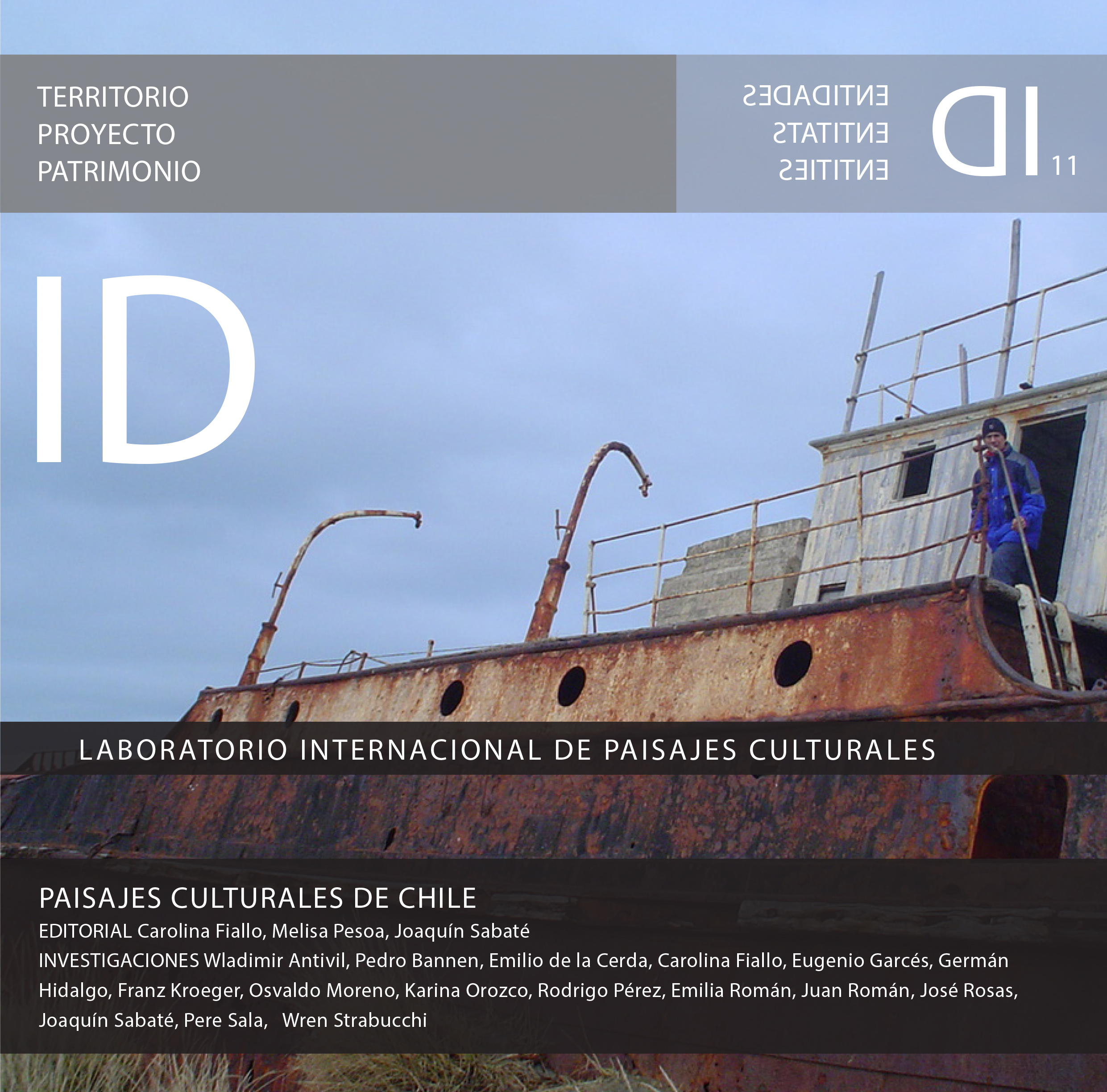EL PAISAJE CULTURAL EN CHILE
DOI:
https://doi.org/10.5821/id.12015Abstract
ABSTRACTThe category of cultural landscapes, that highlights the natural and cultural heritage of Chile and its history, have an exceptional importance, since they contribute to foster the national pride for the cultural assets located throughout the peculiar Chilean geography, and propose a correspondence between society and environment, as well as a reciprocal interaction with the cultures that formalize and determine them in their transforming action.
Some of the cultural landscapes presented in this publication, arise together with other territorial and economic heritage, reached by Chile during the second half of the nineteenth century. In this period Chile was consolidated as a country, strengthened the expansion of the national state and set forth the boundaries and contents of its social and territorial structure.
In addition, it incorporated new human groups with their cultural traditions, while at the same time increasing the trade of commodities with the British and American economies.
Likewise, the cultural landscapes highlight other cosmovisions, cultures and ways of life of indigenous peoples who, according to their ancient traditions, are part of nature and its various ecosystems, immersed in interrelated territories which are part of an environment with its particular biological and cultural manifestations.
For the most part, these cultural landscapes evolve, as is the case of Cape Horn, Tierra del Fuego, Chiloe, the Mapuche people, the Central Valley, Santiago, Rapa Nui, Valparaiso and the Ruta de la Sierra. Meanwhile, the coal mining landscape in Lota, the copper company town in Sewell and the nitrate operations in northern Chile are relicts’ cultural landscapes, in which the progression of its main industrial function came to an end, with the exception of the María Elena company, the last of the nitrate cities.
Keywords: Evolutional and relict cultural landscapes, territorial and economic heritage, social and geographic consolidation, environments.
Downloads
Published
Issue
Section
License
Copyright (c) 2023 Creative Commons

This work is licensed under a Creative Commons Attribution-NonCommercial-ShareAlike 4.0 International License.
Those authors who have publications with this journal, accept the following terms:
a. Authors will retain their copyright and guarantee the journal the right of first publication of their work, which will be simultaneously subject to the Creative Commons CC BY-NC-ND-4.0 recognition license that allows third parties to share the work provided that its author and its first publication are indicated in this journal, but they cannot be changed or used commercially.
b. Authors may adopt other non-exclusive license agreements for the distribution of the version of the published work (eg: deposit it in an institutional telematic archive or publish it in a monographic volume) provided that the initial publication in this journal is indicated.
c. Authors are allowed and recommended to disseminate their work through the Internet (e.g. in institutional telematic files or on their website) before and during the submission process, which can lead to interesting exchanges and increase citations. of the published work. (See The effect of open access).













